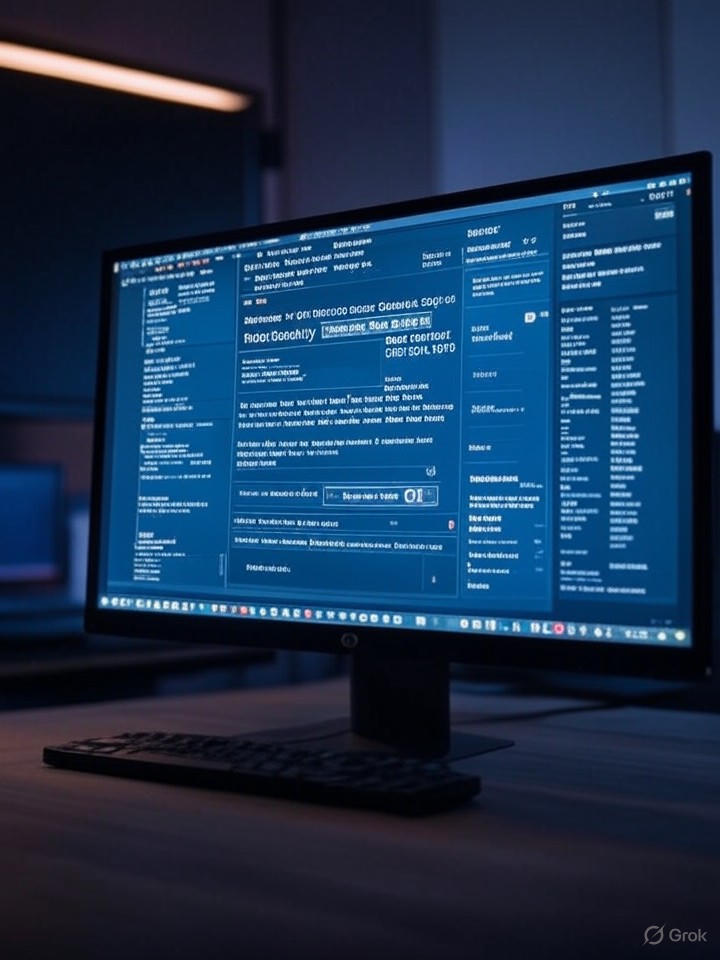In the fast-evolving world of containerization technology, a newly disclosed vulnerability in Docker Desktop has sent shockwaves through the developer and IT security communities, highlighting the persistent risks in tools designed to isolate applications. The flaw, tracked as CVE-2025-9074 with a critical severity score of 9.3 out of 10, enables attackers to escape container boundaries and compromise the underlying host system, particularly on Windows machines. Discovered by security researcher Felix Boulet, this issue stems from an unauthenticated API exposure that malicious containers can exploit to access the Docker Engine, potentially leading to full filesystem manipulation and privilege escalation.
The vulnerability affects Docker Desktop versions prior to 4.44.3 on both Windows and macOS, but its impact is markedly more severe on Windows due to the integration with Windows Subsystem for Linux 2 (WSL2). As detailed in a report from BleepingComputer, attackers can mount the entire host filesystem as an administrator, read sensitive files, and even overwrite system DLLs to gain administrative control. This bypasses even Docker’s Enhanced Container Isolation (ECI) feature, which is meant to provide an additional layer of security.
Exploiting the Weak Link in Container Security
On macOS, the risk is somewhat mitigated by built-in operating system safeguards, as noted by researcher Philippe Dugre in his analysis. Dugre demonstrated that while he could create files in a user’s home directory on Windows, similar attempts on macOS failed due to stricter permissions. This disparity underscores how platform-specific implementations can create uneven security postures in cross-platform tools like Docker Desktop, which powers millions of development workflows worldwide.
The exploit begins with a server-side request forgery (SSRF) attack, where a malicious container tricks the Docker daemon into exposing internal APIs over a local subnet. According to insights from SecurityWeek, this allows unauthorized access to mount points and system resources, effectively turning a contained environment into a gateway for host takeover. For Windows users, the WSL2 backend exacerbates the issue, as it runs the Docker Engine in a Linux virtual machine that shares filesystem access with the host.
Industry Implications and Response Strategies
This flaw arrives at a time when container adoption is surging, with Docker Desktop being a staple for developers building microservices and cloud-native applications. Posts on X (formerly Twitter) from sources like The Hacker News have amplified the urgency, warning that attackers could leverage this to hijack entire systems, with one post noting the ease of escalating to admin privileges on Windows. The sentiment echoes broader concerns about container escape vulnerabilities, reminiscent of past issues in Docker and Kubernetes ecosystems.
Docker’s official response, as outlined in their security announcements, emphasizes immediate patching to version 4.44.3 or later. The company has fixed the API exposure and reinforced isolation mechanisms, but experts advise users to review container images for malice and enable multi-factor authentication where possible. In a detailed breakdown from TechRadar, it’s clear that while macOS users face lower immediate risks, all affected parties should audit their setups.
The Broader Context of Container Risks
Beyond the technical fix, this incident raises questions about the trust model in container platforms. As GBHackers reported, the vulnerability allows any running container to achieve full compromise, potentially amplifying threats in shared development environments or CI/CD pipelines. Industry insiders point out that this isn’t isolated; Docker’s security announcements page lists prior fixes for issues like CVE-2025-6587, involving sensitive data in logs, underscoring a pattern of evolving threats.
For enterprises relying on Docker Desktop, the takeaway is proactive vigilance. Security teams should integrate automated scanning tools and consider alternatives like Podman for heightened isolation. As one X post from Cybersecurity News Everyday highlighted, the flaw’s CVSS score reflects its potential for widespread impact, urging immediate action to prevent data breaches or ransomware insertions.
Looking Ahead: Strengthening Defenses
In conversations with developers on platforms like X, there’s a growing call for Docker to enhance default security postures, perhaps by making ECI mandatory or introducing runtime monitoring. The patch rollout has been swift, but the episode serves as a reminder that even mature tools can harbor critical weaknesses. By addressing this flaw, Docker not only mitigates immediate risks but also reinforces confidence in container technology as a cornerstone of modern software development.
Ultimately, this vulnerability illustrates the delicate balance between usability and security in dev tools. Windows hosts, with their WSL2 dependencies, emerge as the weak point, but the fix paves the way for safer practices. As the tech community digests this, expect more scrutiny on container APIs and cross-platform consistencies to prevent future escapes.




 WebProNews is an iEntry Publication
WebProNews is an iEntry Publication